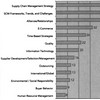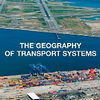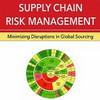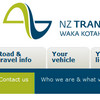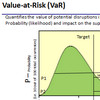 The recent earthquakes in Samoa in the Pacific and in Padang in Indonesia are a poignant reminder for three chapters in my most recent book review, Dynamic Supply Chain Alignment by John Gattorna. In this book, the three chapters by Kim Winter and Michael Whiting and Kate Hughes point at why both military and humanitarian supply chains are needed for the overall best effective rescue effort. Only by combining the two, the strengths of both types of logistics can be exploited, where the extreme agility of rescue organizations can be matched with the extreme efficiency of the military.
The recent earthquakes in Samoa in the Pacific and in Padang in Indonesia are a poignant reminder for three chapters in my most recent book review, Dynamic Supply Chain Alignment by John Gattorna. In this book, the three chapters by Kim Winter and Michael Whiting and Kate Hughes point at why both military and humanitarian supply chains are needed for the overall best effective rescue effort. Only by combining the two, the strengths of both types of logistics can be exploited, where the extreme agility of rescue organizations can be matched with the extreme efficiency of the military.
Fully Flexible Supply chains
Fully flexible supply chains are needed in response to an emergency or humanitarian crisis. In fact, humanitarian supply chains are not fully flexible from the start, they evolve and go through four phases of their life cycle:
- Lean + Collaborative (Prequel)
- Stockpiling goods
- Agile (Phase 1)
- Executing quick response
- Fully Flexible (Phase 2)
- ‘Improvising’ creative solutions on site
- Collaborative + Lean + Agile (Phase 3)
- Developing systematic/structured activities
- Returning to ‘normal’
Humanitarian supply chains are ‘extreme’ supply chains with a high level of uncertainty in constantly changing environments. Traditional (slow moving) supply chains may often hinder (rather an facilitate) the response efforts
Humanitarian supply chains
Humanitarian supply chains differ considerably from commercial supply chains, and humanitarian supply chains must deal with perhaps the most challenging requirements of all: They must be able to respond rapidly, serve multiple, destinations simultaneously, coordinate global and local supplies, and more often than not, deal with inefficient means of communication and transportation, or in worst case, an almost total lack of civil means of communication and transportation.
Military supply chains
Military supply chains can be divided into three distinct chains:
One chain, fast but low volume, moves commodities like food, medicine and clothing – the commercial world equivalent of a Wal-Mart or Sears. The second chain transports major components like weapons systems that require maintenance and repair over extended periods. Boeing and Caterpillar would be their commercial equivalents. The third is the deployment chain in which the military must move large number of troops and material in a short period in trying conditions.
The strength of military supply chains lies in their self-supporting autonomy, and the ability to deploy whatever is needed to wherever it is needed, fast and without delay, day and night. These rapid deployment abilities are what humanitarian supply chains sometimes lack, particularly in reaching the most remote affected areas. here, the military can play an important role.
Civil-military collaboration
In disaster response, military supply chains can play a major role side-by-side with humanitarian supply chains. In order to achieve this, roles and responsibilities need to be clearly separated, because the military community has different objectives, schedules and priorities from the humanitarian community. Military operations may enable access for humanitarian operations, but neither party should be part of the other party’s operations. There must be coordination, but not collaboration. During the 2004 Tsunami in Banda Aceh, civil-military cooperation contributed greatly to the success of the rescue efforts. Thailand id not follow in these steps in their post-tsunami planning efforts for emergency logistics.
Humanitarian Logistics Group HUMLOG
When thinking about the ongoing rescue efforts in Padang and in Samoa, I am reminded of HUMLOG, an international research network on humanitarian logistics. The aim of the HUMLOG Group is to research the area of humanitarian logistics in disaster preparedness, response and recovery. The HUMLOG Secretariat is hosted by the HUMLOG Institute, in Helsinki, Finland, and is headed by Gyöngyi Kovács, who also maintains a blog at interorganisational.org.
Resilient organisations
New Zealand, a country that is no stranger to natural disasters, has realized that there is a need for society as a whole to focus on the ability to manage and minimize the impact of disastrous events. There is an intrinsic relationship between organisational resilience and improving the resilience of communities. That is why they launched a research program titled Resilient Organisations, aimed at assisting New Zealand organisations to recover economic competitiveness after hazard events by improving their resilience.
Author links
Links
- hanken.fi: Gyöngyi Kovács
- resorgs.org.nz: Resilient Organisations
Related
- husdal.com: Emergency logistics
- husdal.com: Can Supply chain Management learn from Emergency Management
- husdal.com: Resilience Revisited
- husdal.com: How New Zealand develops Resilient Organisations

